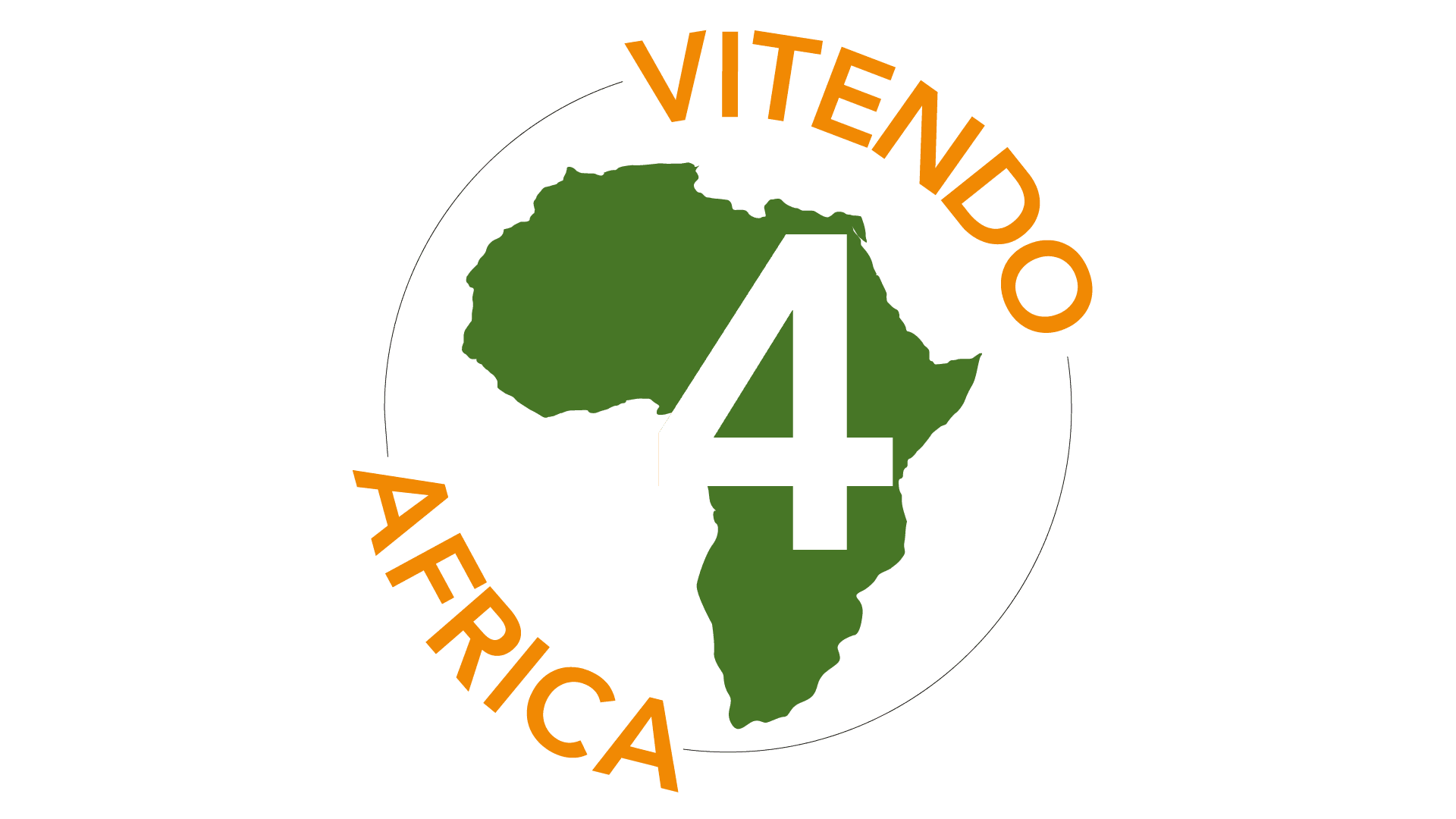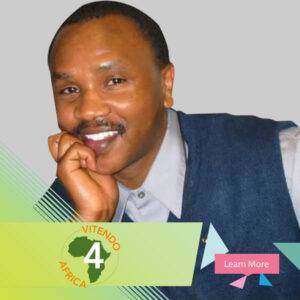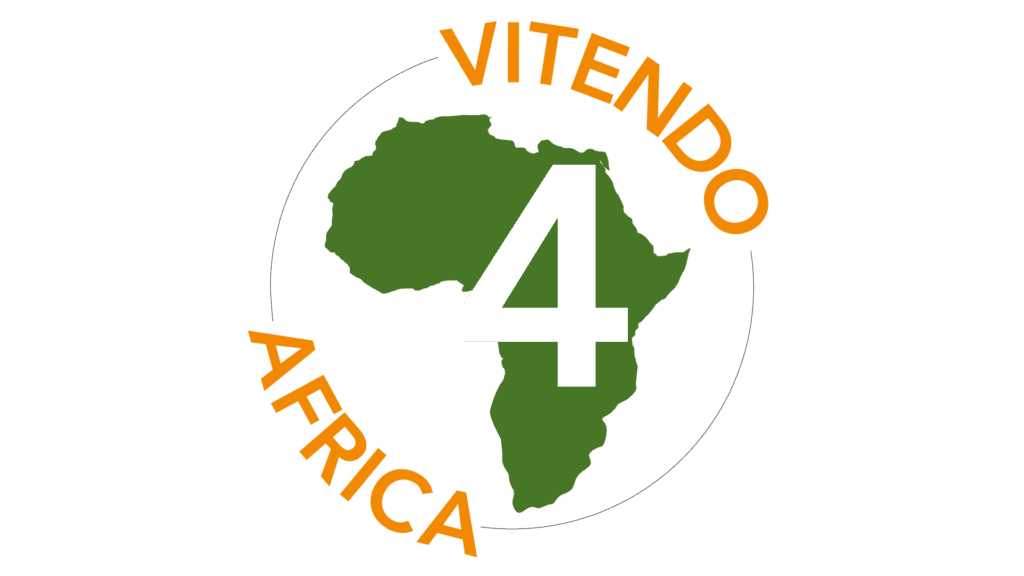by Nina Needleman
Vitendo4Africa is a 10-year-old nonprofit organization whose mission is to empower stronger, healthier immigrant individuals and families through advocacy, the provision of support and services, strengthening alliances and developing strategic collaborations.
The group, named after a Swahili word for “action,” addresses needs of African immigrants in North St. Louis County, West County and St. Charles County. Services range from helping people get a credit line, loans or referrals to other service agencies, as well as increasing awareness of nutrition, homebuying, youth development programs, health screenings and legal services.
V4A has established strong partnerships with communities from over 25 nationalities in the region. The agency has a strong history of working with local organizations, community leaders and government agencies with the goal of improving the overall health of immigrants in St. Louis.
STL Nonprofit News Contributing Writer Nina Needleman posed questions to Geoffrey Soyiantet, V4A’s President and CEO.
Many people lump together refugees and immigrants and do not understand the differences in the groups and subgroups that exist. For Vitendo4Africa, the constituencies you serve are not refugees fleeing from danger or crime, nor are they typical immigrants seeking new opportunities. Please explain how the category of people you serve are differentiated from those groups.
V4A works mostly with immigrants who come to USA through the Diversity Visa (DV) lottery program, (which is) also known as the green card lottery, a U.S. government lottery program for receiving a U.S. Permanent Resident Card. The Immigration Act of 1990 established the DV program that is administered by the Department of State and conducted under the Immigration and Nationality Act (INA). This group of immigrants receive no government assistance to help them settle. They entirely depend on support from their host family and the community. We also work with other immigrants who came in with HB-1 visas, international students and refugees who have been in USA for a long time. Others come through a relative petition.
Your F4KIDZ program promotes healthy living and mentorship for over 70 immigrant kids to help them overcome social, emotional and academic challenges as they pursue their life dreams. (Over 70 kids are actively involved in the program). How does the mentorship work? And how is this program different from other mentorship opportunities available in the area, both in terms of services provided and the engagement with parents and families?
There are a limited number of programs that work with the African immigrant population in St. Louis, and more specifically, no youth programs exist to help address the unique needs of African youth immigrants in the region. This program is designed to bridge the gap between immigrants and healthcare providers, improve access to quality health care, address language and cultural barriers, and educate immigrants on healthy living. Without effective programs and services, these community members often slip through the cracks of the health care system with little support. V4A is committed to ensuring the success of immigrant families in the St. Louis region through individualized services designed to meet their unique needs.
V4A Mentorship program helps to connect immigrant youth with immigrant professionals as their mentors. This is very important because many immigrants face many challenges while trying to assimilate into the American system and understand the American education system.
What’s the story behind the annual student service trip to Kenya? It sounds like a great success that has taken on a life of its own. How has that trip impacted the students?
Kenya Mission trip has a great impact to our immigrant youth in so many ways. The program gives the students the opportunity to connect and learn about their identity. In the past we have seen many immigrants and refugees struggle with identity and in the process of trying to fit in at school, they end up (facing issues such as) drugs, substance abuse, depression and suicide. The experience in remote parts of Africa also helps our youth to appreciate the many privileges they enjoy in America. We have also noted that many of those who participate in the program qualify for more college scholarships and are three times more likely to pursue a professional career than those not in the program.
Last summer, Gracemary Nganga led a team of eight students for a mission trip to Kenya. She graduated this year from Hazelwood West High and was accepted in over 22 prestigious universities in the country. She also received over $4.2 million worth of scholarships. She is joining Stanford University this fall to pursue biology science. This week two other mentees received Missouri Community Service Commission Awards. Only eight students in Missouri are awarded each year and two of them came from our program.
You’ve made impressive connections with several health organizations to address women’s health needs in your community. Given the vast health needs, what types of collaborations would help you move forward here and are there particular categories of health you want to focus on as your next objective?
Healthcare access is one of the biggest challenges facing the immigrant community in this country. Our African immigrant and refugee community is not an exception. Language and cultural barriers affect the quality of care and it remains a challenge to both the patient and service provider. Simply scheduling an appointment can be an ordeal if you do not speak English.
V4A has great partnerships to provide mammogram and pap smear screening for immigrant women. There has been a challenge to get women to come out for the screening. We need health education using the most effective and acceptable approach in the community. We need to train community health workers who are culturally competent to educate the community in a language people can understand. There is the need to provide transportation and reading materials in a language everyone can understand.
You have an impressive board list and have recently done a strategic plan. What’s your vision of the future – what’s next for Vitendo, and how is the board going to help move the agenda forward?
Our goal is to expand the program to the rest of the cities in the state and across the country. We plan to have our own location in North County where we will provide after school programs for kids, computer classes, financial literacy workshops, workforce development training and health education and awareness trainings for immigrants and refugees seniors. We plan to provide training on skills development in technology for youth, kids and adults.
Information provided by Geoffrey about V4A and related resources:
Vitendo 4 Africa Website: www.vitendo4africa.org
St Louis Mosaic Project: www.stlmosaicproject.org/
Welcoming America: https://www.welcomingamerica.org/
Start Here Stl – www.startherestl.org/immigrant-services.html
Immigrant Service Provider Network (ISPN) www.mira-mo.org/ispn
Source: STL NONPROFIT NEWS



